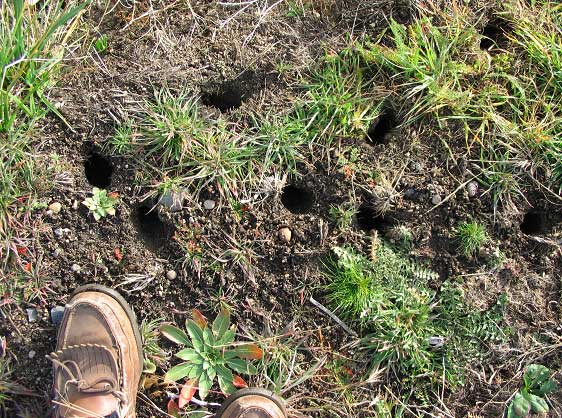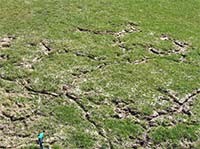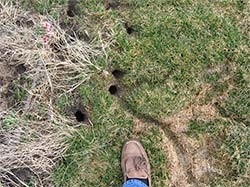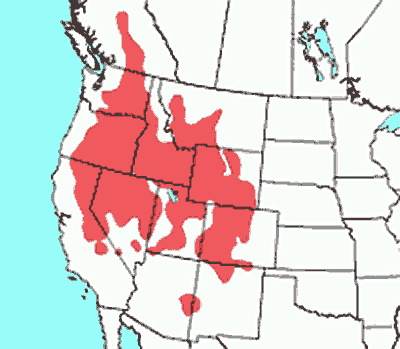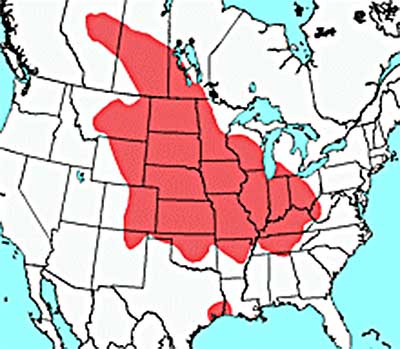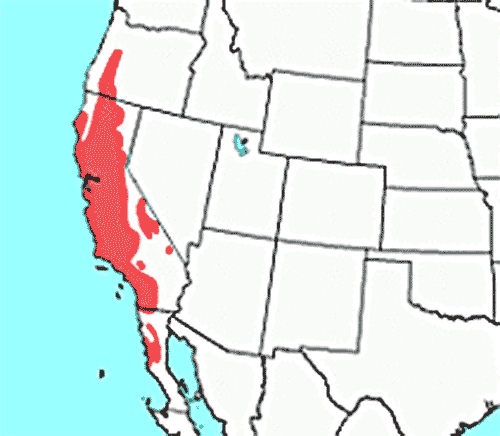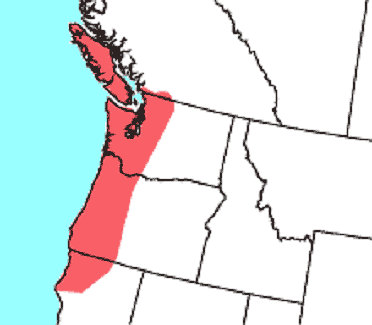Above ground foraging voles such as the Meadow vole, are found mostly above ground in taller grasses, lawns and cover. They make a network of surface trails in the grass and grass clippings or thatch that are linked to underground burrows. The surface runways are 1 to 2 inches in width and are often littered with droppings and grass cuttings. They also build runways under low-growing vegetation but can make shallow tunnels in the ground. Occasionally they will eat roots, tubers and bulbs.
When startled, a vole may emit a high-pitched squeak, gnash its teeth, and either freeze or flee. If it flees, it will do so only along its runway.
Notice the destruction voles can cause to turf areas.
Be alert for the presence of voles. Look for fresh trails in the grass, burrow openings, droppings, piles of clipped grass stems without the seed heads, and evidence of feeding in the landscape.
A cluster of many burrow entrance holes is a common sight in lawn and pasture areas where Montane voles are present. Voles dig many short, shallow burrows and make underground nests of grass, stems, and leaves. One burrow system may house many voles.
The home range of this vole is about a 100-foot radius around the entrance holes.
Above ground foraging voles gnaw and girdle trees and saplings at the ground level. Vole gnawing can be differentiated from the gnawing of other animals by the non-uniform gnaw marks. The gnaw marks are about 1/16 to 1/8 inch wide and 3/8 inch long found in irregular patches and at various angles. If this gnawing completely surrounds the root or trunk of the tree or shrub, it will kill the plant.
It is important to act before vole numbers get too high, especially before winter. When snow cover is present the gnawing may be higher as snow protects the voles from predators and their activity can go undetected until it is too late.
Above ground foraging voles prefer runways in open grass but stay and hide where there is a protective cover from predators such as hawks. That is why the Tent setup of the Vole Control Bait Station System is effective in controlling them - because they feel safe while they eat the bait.
Signs of Vole Activity
click images to enlarge
You can learn more about species specific behavior of Above Ground Foraging Voles by reading about the species located in your area as shown on the maps below. Remember, however, it is not usually necessary to identify the exact species of voles to gain control. Only the foraging category must be identified for proper set-up procedures (i.e. Above Ground Foraging Voles). Once the foraging category is determined, it is important to do the SYSTEMATIC SEARCH to find the area of most prevalent vole activity. The SYSTEMATIC SEARCH will help you determine the number of Vole Control Bait Station Systems you will need and the optimal areas to place them.
Click on the maps below to learn about specific Above ground vole species.
|
Meadow Vole Distribution |
Montane Vole Distribution |
Long-tailed Vole Distribution |
|
Prairie Vole Distribution |
California Vole Distribution |
Townsend's Vole Distribution |
|
Distribution Maps From - National Museum of Natural History ©2004 Smithsonian Institution |
||


